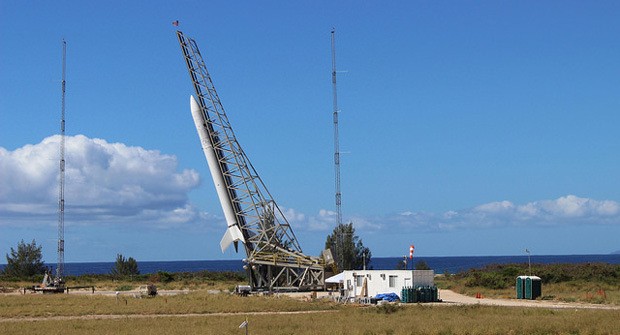On Wednesday, an experimental rocket developed by Aerojet Rocketdyne Holdings Inc exploded in mid flight during its maiden launch, making this as a setback for the U.S. military as they plan to cary out low cost, easily manufactured small satellites launchers.
The Super Strypi rocket measures 67 feet tall which was launched from the Pacific Missile Range Facility in Kauaʻi, Hawaii at 5:45 P.M. local time on Tuesday, November 3. The rocket used fin guiding technology that launched from a steerable rail where it failed in less than a minute after liftoff.
This launch is part of a crucial U.S. military initiative for developing lowcost launch services for smaller satellites in order to carry out quick turnaround missions. The Super Strypi is composed of a three-stage, solid fuel rocket, developed in cooperation with Aerojet and the University of Hawaii and the U.S. Department of Energy's Sandia National Laboratory in New Mexico.
The rocket is specifically designed to launch scientific payload weighing as much as 660 pounds in lower Earth orbit, at 295 miles above the Earth where the Air Force is expecting that production costs for these could generate less than US $15 million for every vehicle.
Last week, the U.S. Government Accountability Office released a report that indicated that among the military programs that are developing launch on need services, none of them are ready to move on from development and testing stages to production levels yet.
Apart from the U.S. military, there are several private commercial space agencies that are now developing low cost smaller launchers, that can lead to faster launches of planned network communications, remote sensing and weather forecasting satellites, namely SpaceX, Google's Skybox Imaging, Planet Labs, OneWeb, UrtheCast, BlackSky Global and Spire.
The companies that are currently working on small satellite launchers are Virgin Galactic, Firefly Space Systems, Rocket Labs, Stratolaunch Systems and zero2infinity.
Following this rocket failure, an investigation will be formally carried out for the 122 pound observation research satellite that was destroyed in mid air. This satellite is built by researchers from the University of Hawaii that carried a payload of 12 smaller experimental probes, roughly the size of a shoebox each, known as CubeSats that are funded by NASA.



























